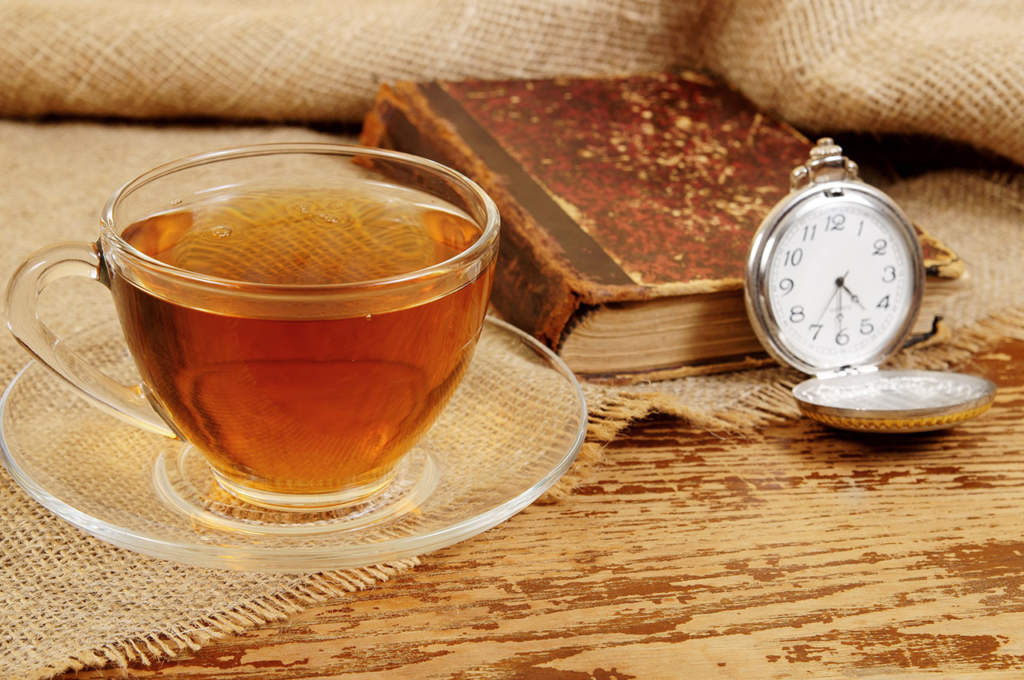
Tea, the world’s second most consumed drink after water, has a complex history, deeply rooted in Chinese culture. There are numerous legends and tales about its origins, centered around the first cup of tea that was ever brewed.

The history of tea dates back to ancient China, almost 5,000 years ago. According to legend, in 2732 B.C. Emperor Shen Nung discovered tea when leaves from a wild tree blew into his pot of boiling water. He was immediately interested in the pleasant scent of the resulting brew, and drank some. Legend says the Emperor described a warm feeling as he drank the intriguing brew. As if the drink was investigating every part of his body.
Shen Nung named the brew “ch’a”, the Chinese character meaning to check or investigate. In 200 B.C. a Han Dynasty Emperor ruled that when referring to tea. A special written character must be used illustrating wooden branches, grass, and a man between the two. This written character, also pronounced “ch’a” symbolized the way tea brought humankind into balance with nature for the Chinese culture.

Rooting in other continents
However, tea didn’t make a lasting appearance in the West until the 17th century. A Portuguese missionary is attributed with bringing tea to Europe while caravanning back and forth between Portugal and China. But it was not seriously traded until Dutch merchants entered the picture in 1610. That year, the first shipments of Japanese and Chinese tea arrived in Europe via ships charted by the Dutch East India Company. Tea also flowed into Russia early on via camel trains that came from China on part of the famous Silk Road. The popularity of tea rapidly spread to cities including Amsterdam, Paris, and London. Although its high price limited consumption to royal and aristocratic classes. Tea drinking, a novelty at the time, allowed the wealthy to partake in a bit of Eastern adventure during the age of exploration and discovery.
The tradition of drinking tea in Pakistan is ancient and dates back to when Britishers entered the subcontinent for trade purposes. So these traders introduced the concept of drinking tea, and later on, different subcontinent areas (the areas that currently lie in India, Bangladesh, and Pakistan) started cultivating tea. Hence, over time, drinking tea became the most widespread habit among natives, and tea boards started advertising campaigns for its promotion.
After the partition in 1947, the subcontinent was divided, and the population became tea addicted. Since Pakistan does not conduct large-scale tea production, they import tea leaves from Bangladesh and worldwide. After it came to the common household. Tea became essential for most people. In Asia, it is the solution for literally everything. You can find it at weddings, feastings, or generally after breakfast, lunch, or dinner. The most common types of tea are as follows.

Types famous in Asia especially Pakistan
Pakistan has a huge range of tea that is drank daily. Each one provides its own unique tastes, fragrances and colours. Let’s grab ourselves a brew, and take a look at a few:
Dum Ki Chai
The day-to-day tea of choice for many Pakistanis. This drink is made similarly to how people like to make tea here in the UK. Firstly, brew the tea in hot water before pouring it into cups and adding milk and sugar to taste. This is the tea you will probably be offered if you ever visit someone anywhere in Pakistan.
Doodh Patti
This drink isn’t just famous in Pakistan; Nepal, India and Bangladesh all consume tones of this famous tea each year. It is the second most popular tea of choice across Pakistan and is made slightly differently. This tea only uses tea, sugar and milk to give a silkier and creamier tea. You may also see this tea referred to as Peshawari Chai as well.
Masala Chai
This tea has become famous all over the world for its spicy profile and can be found in almost any café or coffee shop. This black tea is mixed with a selection of herbs and spices originally including cardamom pods, cinnamon sticks, ground cloves, ground ginger and black peppercorn: but the recipe differs from place to place.

